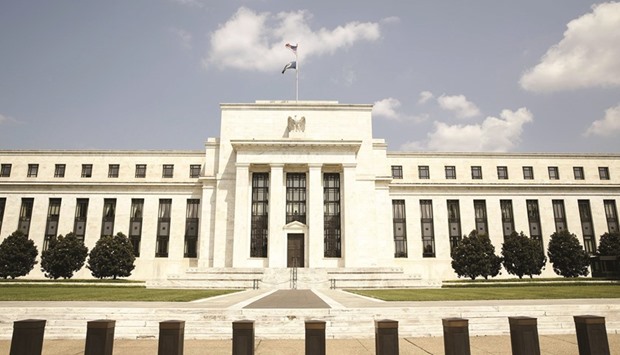The path to Federal Reserve policy tightening this year has one final hurdle to clear: a potential Donald Trump victory in the US presidential election.
The stage appears set for an interest-rate hike next month at the Fed’s last meeting of 2016. Domestic economic data last week, including an acceleration in wage growth, support a move in December.
In its November 2 statement, the Fed’s policy committee said the case for higher borrowing costs had strengthened amid a pickup in the pace of inflation. Traders assign about a 76% probability of a rate hike by year-end, according to futures data compiled by Bloomberg.
Yet some strategists say a victory by Trump, the Republican nominee, in the November 8 vote may flip the situation. His rival, Democrat Hillary Clinton, is seen as more likely to maintain existing economic policies, while Trump has campaigned on an anti-trade platform and accused the Fed under Chair Janet Yellen of playing politics.
Polls show the presidential race has tightened as it heads into its final weekend.
The December rate-hike probability would “go to 20% or even lower” if Trump is elected, said Priya Misra, head of global interest-rate strategy in New York at TD Securities (USA), one of 23 primary dealers that trade with the Fed. “Equities fall significantly, dollar strengthens, emerging markets fall - so financial conditions tighten a lot, which will affect growth negatively. The Fed will wait to see how growth responds.”
Policy makers entered 2016 forecasting four rate hikes, after liftoff from near zero in December 2015. Instead, they’ve stood pat and repeatedly pared projections amid uneven domestic economic data and signs of stalling global growth.
Fed Bank of Atlanta President Dennis Lockhart signalled on Friday the central bank was on track to raise rates next month, but hinted that some event risk may prevent officials from pulling the trigger.
“There’s a relatively high bar, at least in pure economic terms, a relatively high bar to not moving in December,” Lockhart, who is not a voter on the Fed’s policy committee this year, told reporters in Orlando, Florida. “There are other things that go on in the world that could give pause and I don’t completely rule them out,” he said, without providing specifics.
Treasuries rose on Friday as traders shifted their focus to the election, overshadowing a Labor Department report showing steady job gains in October as wages rose from a year earlier by the most since 2009.
The benchmark 10-year note yield declined to 1.78%, according to Bloomberg Bond Trader data.
Domestic economic data suggest the Fed should raise rates in December absent an economic shock stemming from this week’s election, according to Mohamed El-Erian, chief economic adviser at Allianz. “If Donald Trump wins the election, the first if, and if in his acceptance speech he reiterates his anti-trade rhetoric – so you have two ifs there - then risk markets will sell off significantly,” El-Erian said in an interview on Bloomberg Television. “If the two ifs materialise, I would expect a 5 to 10% decline in the S&P 500 Index of stocks, with the balance of risks toward even a greater decline.”
The 76% probability futures traders assign to a December rate hike is up from 69% seen a week ago. The probabilities are based on the assumption the effective fed funds rate will trade at the middle of the new range after the central bank’s next hike.
A Trump presidency “would be a more uncertain environment,” said Justin Lederer, an interest-rate strategist in New York at Cantor Fitzgerald, a primary dealer. “The Fed would rather wait and see how everything plays out before they make a rate hike, whereas Clinton would be more of status quo.”

The Federal Reserve building is seen in Washington. The stage appears set for an interest-rate hike next month at the Fed’s last meeting of 2016.
